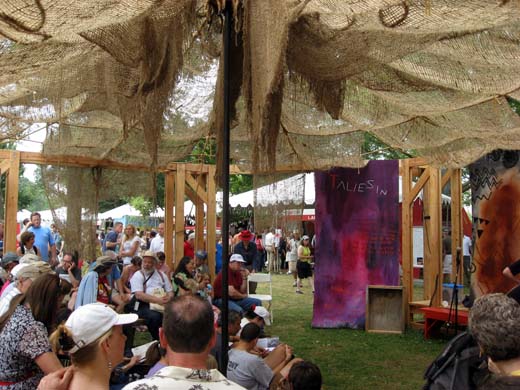 The books are tired: They let themselves yellow, they reek of teenage habits, and they laze around the shelves as if they own them. Stone-faced, you say: You there, all of you: Goodbye. With soft groans, they sprout little legs, stumble down the stairs, and march away. You admire their sense of duty; you commend yourself for knowing how to treat them.
The books are tired: They let themselves yellow, they reek of teenage habits, and they laze around the shelves as if they own them. Stone-faced, you say: You there, all of you: Goodbye. With soft groans, they sprout little legs, stumble down the stairs, and march away. You admire their sense of duty; you commend yourself for knowing how to treat them.
You wonder where they went only years later, when an email asks: “Would you like to teach Modern Fantasy and Science Fiction?”
Thus begins the blur: creeping through library basements, climbing over warehouse piles, swinging a sun-bright shopping basket where books replace groceries in long, looming rows. Look: A spaceship reminds you of a long-lost friend, the guy who once loaned you this book. Over there is the novel you never quite got; its crude, trippy cover still mocks you. A fantasy trilogy leaps from a shelf, desperate to be held again; years ago, you all spent a week at the beach. Paperbacks peep and cry out sideways, and people gawk as titles start to blur: Axaxaxas mlö, dhcmrlchtdj…
You bring them home in plastic bags.
That face you make as you drive? It’s the thousand-year stare, the result of looking too long at the Middle Ages. The cure is a holiday, a summer spent sniffing ’round the future—but when you come home and toss those bags on the floor, they rustle, and you look down. Some books squeak and hide under the sofa; others dance and do flips before clambering onto your shelves. In the chaos, you catch a whiff: musty, sure, but sweetly familiar, and you know that you’re not in the future at all. You draw a deep breath and you think, Well, I’m back.












